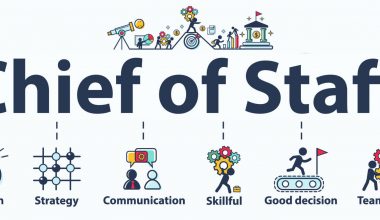Traditional organizations are bureaucratic and immutable, which presents obstacles when businesses need to innovate and adapt to change. Agile organizations, on the other hand, are designed with much more adaptability and flexibility, meaning businesses can react quickly to the ever-changing market landscape and consumer needs.
Characteristics of Agile Organizations
Agile organizations are designed to be adaptable and flexible. They’re based on the principles of agility, which is the ability to respond effectively and quickly to change. Agile organizations can be identified by the following features:
- Cross-functionality: Agile organizations are split into cross-functional teams, meaning everyone can get involved in projects regardless of their title.
- Flat structure: There is much less hierarchy within agile organizations, which helps to speed up decision-making.
- Empowered employees: Agile involves giving power to employees to make logical decisions and take control of their work.
- Continuous improvement: Through regular feedback and experimentation, agile organizations search for ways to improve.
Types of Agile Team Structure
The type of structure an agile business adopts will depend on budget, available resources, and the type of project. There’s no “best” structure; there are simply different frameworks for various teams, and each will have its advantages and disadvantages. Here are some key examples of agile team structure:
- Specialist: In a specialist team structure, everyone brings knowledge in a different niche and is responsible for managing all tasks within that domain. These experts are essential parts of the team because they can dive deeper into complex areas than anyone else.
- Generalist: A generalist team structure requires everyone to have a basic knowledge of a wide range of topics. This “Jack of all trades” mentality allows them to work on a variety of projects.
- Hybrid: A hybrid team combines both the generalist and the specialist.
- Sub-team: This is known as a team within a team. Sub-teams are individuals within a large team that work on specific areas.
- Parallel: This setup allows everyone to work on the same area and then switch during each new sprint.
What is an Agile Organizational Chart?
There’s no right or wrong answer when it comes to choosing an organizational hierarchy, as the chosen setup will depend on the needs of the business. However, it can be difficult to see how all of the different teams connect.
This is where agile organizational charts come in. These types of charts act as a visual representation of an agile organization’s structure.
How to Build an Agile Organizational Chart
The best way to build an agile organizational chart is with creation software, which will give you access to a library of templates that can be edited to suit the needs of the business.
To get started, you’ll need to choose a model that suits your goals. Next, put some time aside to assign roles, but make sure each person has the training and skills to complete the task. Finally, you should remain adaptable, which means going back to the chart and making edits if need be.
Integrating more agile processes into your business means giving deep thought to the hierarchical structure. To step back and get a clear overview, use agile organizational charts.






